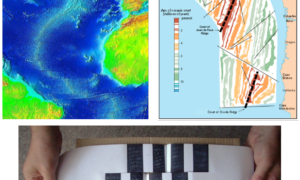CDC REPORT SUGGESTS CATS MAY SPREAD BIRD FLU TO HUMANS
A recent report from the Centers for Disease Control and Prevention (CDC) briefly posted data showing that cats infected with bird flu (H5N1) may have transmitted the virus to humans and other cats in the same household. One case involved a cat infecting another cat and a human adolescent, while in another, a dairy farmworker spread the virus to a cat. The data, which was quickly removed, highlighted the risks of bird flu to both people and pets. H5N1, primarily a bird virus, has also affected mammals, including cats, cows, and seals. While human-to-human transmission is rare, at least 67 Americans have been infected, with one fatality in Louisiana. Experts expressed concern over the delayed publication of this data, urging the CDC to release the full information for scientific review. Cats have become increasingly susceptible to the virus, and further research is needed to understand the potential risks to humans. (New York Times)
RESEARCHERS ARCHIVE CDC DATA AMID FEARS OF REMOVAL
In January 2021, bioinformatician Niema Moshiri received a late-night message from a colleague urging him to back up the CDC website due to rumors that the US government might remove key public health data in response to executive orders under President Trump. Moshiri, along with other researchers, began downloading and archiving critical data from government websites, including the CDC, FDA, and USDA. Some pages had already been removed, sparking concern about the potential loss of vital public health information. Moshiri and collaborators, such as Angela Rasmussen, worked tirelessly to back up thousands of files and create accessible archives, including using the Internet Archive’s Wayback Machine. Legal experts note that downloading and sharing government data for research and advocacy purposes is often permissible. However, there are concerns about the long-term availability of these resources, particularly regarding public health surveys and data related to HIV and chronic diseases, some of which remain inaccessible. (Nature)
HOWARD HUGHES MEDICAL INSTITUTE CUTS STEM INCLUSIVITY PROGRAM
The Howard Hughes Medical Institute (HHMI) recently terminated its $60 million Inclusive Excellence Program, aimed at making STEM education more inclusive at universities. Awardees, including postdoctoral researchers and faculty at 104 institutions, received emails informing them that funding for their three-year awards would cease, with no explanation provided. Launched in 2017, the program worked to draw underrepresented groups into STEM and improve retention by making first-year courses more engaging. Its abrupt closure follows growing scrutiny by the Trump administration on diversity, equity, and inclusion (DEI) initiatives in scientific organizations. The program’s end has left some institutions in limbo, as they had planned future programs and activities funded by HHMI. Despite this, HHMI assured the public that other initiatives, such as the Gilliam Fellows, Freeman Hrabowski Scholars, and Hanna H. Gray Fellows programs, will continue, though their language has shifted away from explicitly promoting diversity and inclusion. (Science)
GOOGLE REMOVES AI COMMITMENT AGAINST WEAPONS AND SURVEILLANCE
Google recently updated its artificial intelligence (AI) principles, removing commitments not to use the technology for weapons or surveillance, which were originally outlined in 2018 by CEO Sundar Pichai. The revised principles, posted after Pichai and other tech leaders attended President Donald Trump’s inauguration, emphasize that AI should align with values like freedom, equality, and human rights, and that companies, governments, and organizations should collaborate to create AI that promotes global growth and national security. The updated principles no longer include the previous vow to avoid using AI for harmful weapons or surveillance. This change follows a shift in the U.S. government’s stance on AI regulation, as President Trump rescinded an executive order mandating safety practices for AI. The new principles also highlight the competitive global landscape for AI leadership, noting the widespread use of AI in daily life, while Google remains committed to publishing annual reports on its AI progress. (Space Daily)
SCIENTISTS DEVELOP ANTI-SLIP POLYMER INSPIRED BY GECKO FEET
Inspired by the gecko’s ability to climb smooth surfaces, scientists have developed a new anti-slip polymer that sticks to ice, which could help reduce slip-and-fall injuries. Geckos use microscopic hairs called setae on their feet, which create electromagnetic attractions through van der Waals forces, allowing them to cling to surfaces like glass. This principle has inspired innovations such as sticky adhesives and climbing robots. In the latest research, scientists from the University of Minho in Portugal created a polymer using silicone rubber and zirconia nanoparticles to enhance hydrophilic adhesion, mimicking the gecko’s ability to maintain grip on wet surfaces. The polymer’s surface was laser-etched with grooves to expose the nanoparticles, increasing its friction on slippery ice. The results showed that composites with 3% to 5% zirconia nanoparticles were highly slip-resistant. This bio-inspired material could significantly reduce slip-and-fall accidents and may also have applications in electronic and artificial skin.(Ars Technica)
NEW RESEARCH REVEALS GALLOWAY HOARD MAY BELONG TO COMMUNITY
The Galloway hoard, discovered in 2014 in western Scotland, is the richest collection of Viking-age objects ever found in Britain or Ireland. It includes silver and gold treasures, such as elaborately decorated arm rings. New research has revealed that the hoard may have belonged to the entire community, as evidenced by a recently deciphered runic inscription on one of the arm rings. The inscription reads: “This is the community’s wealth [property].” Experts had struggled with the inscription, but it was eventually interpreted as stating that the wealth belonged to the community, a fascinating revelation for historians. The hoard, buried around AD 900, includes rare items such as an Anglo-Saxon silver cross, a Latin-inscribed rock crystal jar, and gold thread crafted by skilled artisans. Despite the discovery, questions remain about which community buried the treasure and the circumstances behind its burial, with theories linking it to fears of Viking raids. (The Guardian)
SCIENTIFIC MISCONDUCT LEADS TO CLOSURE OF ANCIENT ROCK SITE
For nearly two decades, geologist Jonathan O’Neil studied some of the oldest rocks on Earth, located in Canada’s Quebec province, with support from the Inuit community. However, after several incidents of scientific misconduct, including vandalism and unauthorized sales of rock samples, the Pituvik Landholding Corporation (PLC) decided to stop allowing further sampling. These actions, which damaged the land and violated trust, led to the closure of the area to all extractions. O’Neil and other scientists lament the loss of potential data, as the rocks in the Nuvvuagittuq Greenstone Belt, dating back at least 3.75 billion years, could provide insights into Earth’s early history. Despite this setback, the PLC is now collaborating with scientists to create a provincial park to protect the site, ensuring that the Inuit community remains the steward of the land and preserving the rocks for future generations to study in their natural state. (Science)
NEW RESEARCH SUGGESTS MASSIVE MOON CANYONS FORMED IN MINUTES
New research suggests that about 3.8 billion years ago, two massive canyons on the moon, Vallis Schrödinger and Vallis Planck, were formed in less than 10 minutes by the energy from an impact event. The canyons, each comparable in size to Earth’s Grand Canyon, are located on the far side of the moon, near the lunar south pole, which is targeted for NASA’s Artemis III mission in 2026. The impact that created the Schrödinger basin unleashed energy far greater than that of nuclear explosions, and the debris ejected from the impact formed these canyons. Scientists believe this event could offer valuable insight into the early solar system. Future missions, such as NASA’s Artemis, plan to study the basin and its surrounding area, which may contain some of the moon’s oldest rocks. The data could help scientists understand how asteroid impacts affected the early Earth and moon’s development. (CNN)
NASA’S PERSEVERANCE ROVER COLLECTS RARE MARTIAN ROCK SAMPLE
NASA’s Perseverance rover has collected a unique rock sample from Mars, known as “Silver Mountain,” located along the rim of Jezero Crater. This 1.1-inch sample is unlike any previously collected, offering a rare glimpse into Mars’ ancient geological past. The rocks in this area, believed to be part of the early Martian crust, could be among the oldest in the solar system, possibly dating back to the Noachian age, around 4 billion years ago. These rocks were likely ejected to the surface by an ancient impact and could provide insights into Mars’ early conditions and the formation of the solar system. Perseverance, which landed in 2021, is also investigating potential signs of past life, collecting samples for future return to Earth. However, NASA’s Mars Sample Return program faces rising costs and delays, with the new plan set for decision in 2026, as China plans its own sample return mission for 2028. (space.com)
Thanks for reading. Let’s be careful out there.
WORDS: The Biology Guy.
IMAGE CREDIT: Tranmautritam.
Sony Thang asserts that the U.S. must confront its responsibility in the …
NASA removes diversity terms following Trump administration orders, impacting key programs and …




Leave a comment